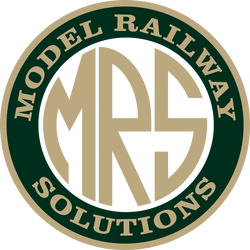
Bachmann 32-518 Derby Lightweight 2-Car DMU BR Green (Early Emblem) - OO Gauge
Derby Lightweight 2-Car DMU BR Green (Early Emblem)
MODEL FEATURES:
- Bachmann Branchline OO Scale
- Era 4
- Pristine BR Green (Early Emblem) Livery
- 2-Car Unit comprising DMBS No. M79121 and DTCL No. M79642
- Destination Blinds for Coventry and Wolverhampton
- Accessory-pack
- Directional and interior lighting
History
The British Rail Derby Lightweight diesel multiple units, were the first such trains to be built en-masse for British Railways. The units were built at BR's Derby Works from 1954 to 1955. The units were built in various formations, including 12 power-twin 2-car units, 84 power-trailer 2-car units, and four 4-car units. The first units were introduced on services around the West Riding of Yorkshire, namely Leeds to Bradford and Harrogate services from 14 June 1954. Subsequent units were introduced onto services in West Cumbria, Lincolnshire, Norfolk, Newcastle to Middlesbrough, Edinburgh to Glasgow and, later, Birmingham to Sutton Coldfield, Bletchley to Buckingham and Banbury, and East London lines services. They were also the last units to run on the Anglesey Central Railway which closed to public traffic in 1964.
These units were an outstanding success, helping to reduce the operating costs of branchlines. Initially they also attracted many more passengers. Between February and October 1956 on the London Midland, they carried 800,000 more passengers than steam in the same period of 1955. The largest increases were on the Buckingham-Banbury, Birmingham-Lichfield, Bury-Bacup, Llandudno-Blaenau Ffestiniog and Manchester-Buxton routes. As such, British Railways ordered many more DMU vehicles from various builders over the next decade, thus helping to eliminate steam locomotives. However, as these units were non-standard compared to other later DMU vehicles, they were subject to early retirement. The last units were withdrawn from normal traffic in 1969, having clocked-up 15 years front line service.
